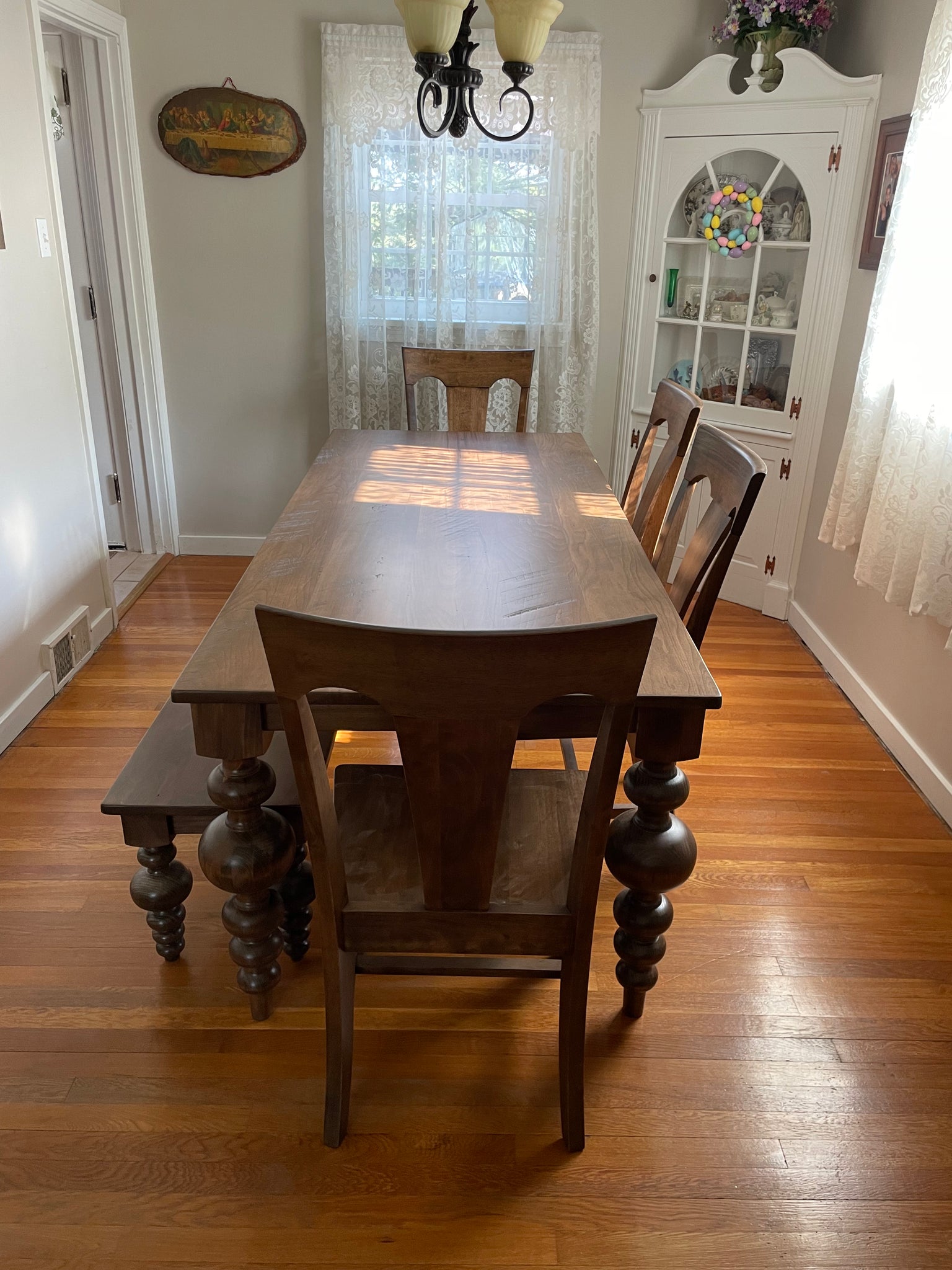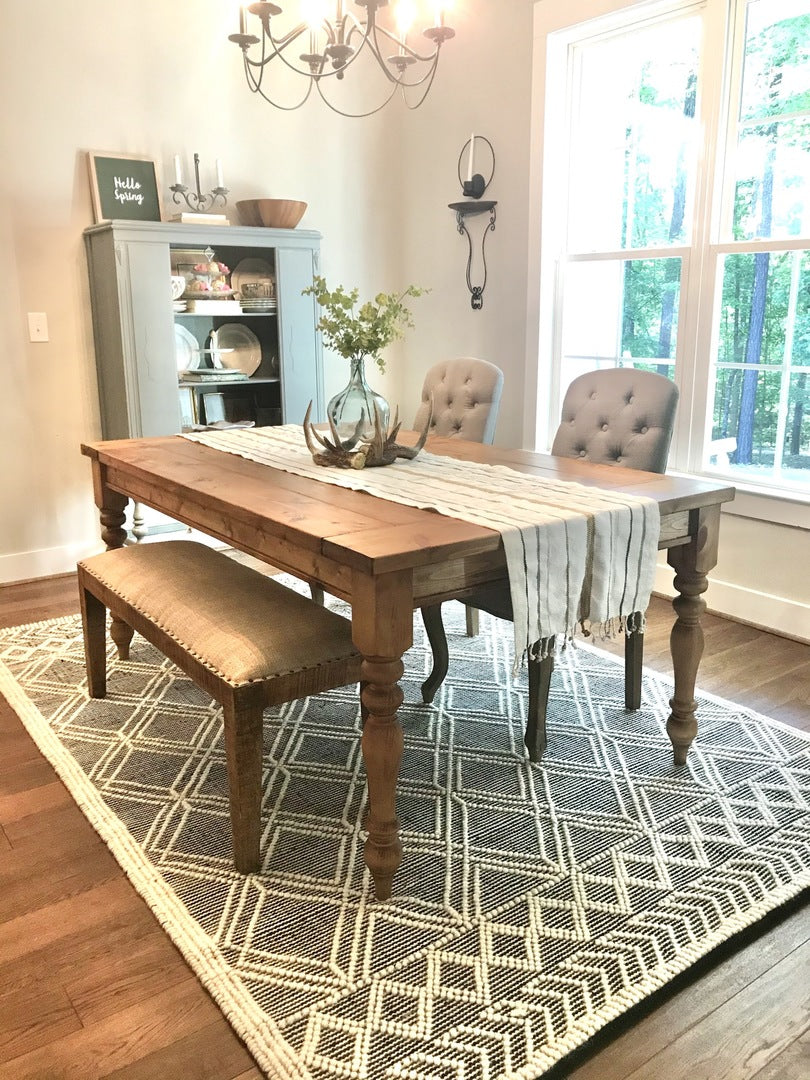Selecting the Perfect Dining Table: What Styles Job Best for Your Home?
Selecting the suitable eating table for your home can be a nuanced process that balances aesthetics and performance. To navigate these selections effectively and discover a table that genuinely complements your home, consider the complying with facets in information.
Assessing Your Room
Evaluating the dimensions and design of your eating location is an essential primary step in picking the perfect dining table. Begin by determining the size and size of the area, making up entrances, windows, and other architectural functions that might affect table positioning. This makes sure that your table not just fits yet likewise enables comfortable motion around it.
Think about the variety of individuals you normally delight. A table should accommodate your house's daily needs while providing adequate versatility for periodic guests. As a guideline of thumb, designate at the very least 24 inches of table size per individual to make certain a comfy eating experience.
It's likewise vital to keep proper clearance around the table. Preferably, there must be at least 36 inches between the table edge and wall surfaces or various other furniture, enabling easy accessibility and activity. For areas where chairs with arms or extra storage units like buffets are entailed, boosting this clearance to 48 inches is a good idea.
Lighting and ambience play substantial functions. Ensure that your eating table lines up with existing lighting components or prepare for ample illumination services. This thorough spatial evaluation guarantees that your table not only fits literally yet likewise harmonizes with your area's overall capability and aesthetic.
Popular Table Styles

Standard eating tables commonly include elaborate details, rounded legs, and rich wood coatings, stimulating a feeling of classic sophistication. They are best for homes with traditional design or those looking to include a touch of elegance to their dining area.
Modern dining tables focus on simpleness and clean lines, commonly integrating materials like glass and metal. These tables are suitable for modern areas, providing a streamlined and minimalist look that complements minimal style viewpoints.
Rustic table, on the various other hand, stress natural materials and a handmade appearance - dining room table legs. They often include recovered wood and a troubled surface, more tips here creating a cozy and inviting ambience. These tables function well in farmhouse-style homes or those seeking a comfy, natural feeling
Industrial dining tables incorporate basic materials such as metal and timber, frequently showcasing a discover this practical aesthetic. This design is appropriate for lofts or city areas, including a touch of tough beauty and toughness to the dining experience.
Each design offers distinctive advantages, making it vital to select one that straightens with your home's general layout and your personal choices.
Material Choices
When choosing an eating table, the choice of material plays an essential duty in figuring out both the table's visual appeals and capability. Wood, steel, glass, and composite products each offer unique benefits and challenges, making it essential to straighten the material with your home's design and way of life needs.
Timber is a classic and versatile choice, available in selections such as oak, walnut, and mahogany. Recognized for its resilience and heat, timber enhances both traditional and contemporary insides. It calls for normal upkeep to prevent scrapes and bending.
Steel tables, often crafted from stainless steel, aluminum, or wrought iron, are applauded for their modern-day allure and effectiveness. They are specifically fit for commercial or minimal setups yet can be vulnerable to damages and might really feel cool to the touch.
Glass dining tables bring an air of beauty and openness, suitable for smaller sized rooms as they develop an impression of even more area. While very easy to tidy, glass can be vulnerable to smudges and calls for mindful taking care of to stay clear of chips and splits.
Composite products, such as MDF and plywood, deal cost-efficient and personalized remedies, though they might lack the durability of natural materials. Selecting the best material guarantees your eating table is both a useful possession and a visual delight.
Forming and Dimension Factors To Consider
After determining the proper material for your eating table, the next factor to consider is picking the best form and size to match your space. Alternatively, round tables cultivate a sense of affection and are excellent for smaller sized dining locations, urging conversation by removing corners and making everybody really feel just as included.
As a policy of thumb, allot at least 24 inches of table size per person to guarantee comfortable dining. Additionally, consider the table's clearance space: there ought to be at least 36 inches between the table edge and the walls or other furniture. Extending tables offer flexibility if you frequently organize bigger events, offering extra seating when required without you could try these out inhabiting added area daily.
Matching Your Decoration
Picking a dining table that harmonizes with your existing decoration is pivotal in producing a natural and inviting room. A sleek, minimal table with clean lines is ideal for a contemporary home, while a vintage, luxuriant table suits an extra traditional setting.
If your decor features warm tones and all-natural products, consider a wooden table to improve the natural feeling. Alternatively, a glass or steel table might be more suitable in an area dominated by great shades and commercial components.
A rough-hewn, recovered wood table can add personality to a rustic area, while a refined marble surface can boost a glamorous dining area. A well-matched eating table not just improves visual allure however also enhances the general dining experience.

Conclusion
Selecting the ideal eating table necessitates careful consideration of room, design, products, form, and size. Standard tables complement timeless insides with abundant wood finishes, while modern tables suit contemporary settings with glass and metal.